Easy Drawing of Survey Easy Drawing of a Resturant Servey
In a world where business success is primarily associated with excellent customer experiences, the term Voice of Customer isn't new anymore. Voice of Customer refers to the opinions and preferences of customers, which need to be actively captured for businesses to be able to meet customer demands and stay competitive in the market. It enables businesses to offer products and services that would sell and also build experiences that would bring in new customers and retain the existing ones. And the bridge between customers' expectations and excellent customer experiences is an intelligent VoC program! A VoC program leverages different channels to listen to what customers across the market prefer and expect. A very important module of the VoC program that helps ascertain business success is VoC surveys. Let's understand in detail what Voice of Customer surveys are and how your business can leverage this mind-blowing Voice of Customer methodology to make sure that you and your customers are on the same page. Voice of Customer Survey is a feedback mechanism that enables businesses to measure and enhance customers' experiences with the brand. VoC surveys are created to gauge customer satisfaction and identify complaints at various touch points. Surveys have been around for ages. And thanks to technology, they are now being used to collect valuable customer feedback to be able to create fool-proof business plans. With digital VoC surveys – be it on the premises or via the web – businesses can collect the most accurate customer data that helps draw insights into customers' buying patterns along with their thoughts, expectations, and inclinations. And understanding the language of customers and how their heads are wired with reference to a product or service can prove to be the biggest breakthrough your business needs to skyrocket its success. In essence, Voice of Customer surveys allows calculating the value your offering holds and help chart out a clear roadmap to increase it multifold. We bring you 8 simple and effective tips to create intelligent VoC surveys that people would love to take. Many people start filling the survey and then leave it halfway because they get 'bored.' That's what happens with extra-long surveys. So, create surveys that are short with simple and precise questions. Keep these points in mind: Ask only Relevant Questions Define the survey objective clearly and make sure that each question produces only useful responses. Avoid unnecessary questions, such as 'what is the name of your home city', if they would not be helpful in your research or customer behavior analysis. Yes/No, True/False, Agree/Disagree questions are dichotomous questions that are useful when you're aiming for results like "x% of participants purchased the product." But such questions are not the right fit for your Voice of Customer survey when you're looking to understand customers' experience since Yes/No questions don't allow asking the reason behind the answers. Lengthy questions and questionnaires can cause survey fatigue which can be bad for your survey results. So, make sure to cut down unnecessary words and jargon from your questions and keep them to the point. Quantitative questions help you collect facts. For example, after conducting a survey, you may find that 70% of your customers are satisfied with your product. And qualitative questions help you understand the story or reason behind those facts. For example, your survey results can help you underline the reasons behind the unsatisfactory experiences of the 30% who responded negatively. Therefore, for an all-rounded VoC approach to data collection, make sure to include both quantitative and qualitative questions. Quantitative questions would help you generate customer experience metrics like net promoter score, customer satisfaction score, and customer effort score. Here are a few types of quantitative questions you can include in your VoC survey: An example of an NPS question is "On a scale of 1-10, how likely are you to recommend our brand to others?" Customer experience scores are useful for experience analysis and insight generation. They give you a solid foundation to build your customer experience strategy. It is important to include qualitative questions in your survey to be able to listen to the voice of customers in their own voice. Qualitative questions encourage detailed and honest feedback and are also critical for drawing actionable insights from customers' answers. You can ask a customer to rate their experience with you and then follow this question up with a second question: "Please share the reason for your answer." This question will help uncover important data about customers' perceptions of the brand and would also highlight the areas of improvement. So, for a successful and insightful survey campaign, make sure to tap into the power of both quantitative and qualitative questions. Customers always prefer taking surveys when they know where it's coming from and whether they benefit from it. If they receive a survey request from an unrecognized source, chances are they will not open it. So, how do you communicate the same? By personalizing surveys! A good VoC survey tool will allow you to customize and personalize your surveys using these features: A personal touch like this will make a huge difference to your survey and encourage survey completion and survey results. Different customers may have different requirements and experiences. Some questions may not be relevant for a few or more customers. And asking customers to go through each question will not only increase survey time but will also affect the survey experience. But with an intelligent survey tool, you can add logic to your surveys and make sure they flow seamlessly despite different answers customers may give. There are three types of Survey Logics: Skip logic is a feature that determines what screen or question a VoC survey participant sees next based on how they answer the current question. Here's an example: You can apply skip logic to multiple survey screens and make your surveys more relevant no matter what answers your customers choose. Hide or display logic enables even a single-page survey to change dynamically. Based on the answer respondents select for the current question, the next set of questions is either hidden or displayed without them having to click on "Next". For example, if a user selects 'Yes' for the question 'Do you have any pets?', they will be taken to the next question 'How many pets do you have?', which is skipped if they select no. The redirect feature of a VoC survey tool allows you to add a custom URL or web link to your survey, that the respondents would be redirected to after completing it. This allows the respondents to delve a little more into your brand and increases traffic to your website. You can also link the product or service page to the survey to create awareness and boost sales. The options are limitless. Asking leading questions is a way of manipulating the voice of customers by pointing survey participants in a direction favorable to you. Adding any words or phrases to your questions will meddle with the perception of your customers and affect their answers. And this will make the survey biased and degrade the quality of results. Here's an example of a leading question: How well was your experience with our product? In the question above, asking the customer 'how well was your experience' is assuming that the customer had a good experience with your brand. This manipulates the customers into thinking that they are obliged to give positive or neutral feedback. On the other hand, Please share your experience using our product. This statement tells customers that both positive and negative feedback is welcome. So, if you want unbiased results and reliable customer data, make it a point not to assume customers' answers while writing a survey questionnaire. Customer experience metrics allow you to measure your customers' response towards your product, service, branding strategies, innovation, etc. They help extract accurate insights so that you know where your brand currently stands and how far it needs to go. There are three types of CX metrics used for different purposes: Net Promoter Score (NPS) allows you to gauge how willing your customers are to refer you to others and spread positive word-of-mouth. NPS surveys gather feedback and calculate a score that indicates customer loyalty. NPS VoC surveys allow you to measure your customers' trust in you and set benchmarks for the business with one simple question — On a scale of 1 to 10, how likely are you to recommend us to your friends and colleagues? Scores 9 & 10 indicate Promoters. Based on the count of promoters, passives, and detractors, the net promoter score is calculated. Not all customers can get 100% flawless experiences. But bad experiences can be recovered with the right customer retention strategy. And a critical element of any customer retention strategy is the CSAT score that helps find out what needs to be fixed. For example- On a scale of 1-10, how would you rate your experience with us?' or ' What could we do to serve you better?' A CSAT survey with these kinds of questions will help you understand if you and your customers are on the same page. It would help you identify the areas of improvement for your business and close the feedback loop quickly to retain customers. Here's an example: Similarly, CSAT surveys can be used in hotels, restaurants, retail stores, exhibitions, etc., to improve the overall experience of customers. Customer Effort Score (CES) is used to measure customers' service experience with your brand. It is used to rate how easy or difficult it was for your customers to interact with your brand, services, or products. White-labeling is a very interesting feature that allows you to personalize your survey with your brand name, logo, image, etc. When surveys are created on and sent through a third-party platform, the logo of the survey manufacturer brand appears on survey screens. But the white-label feature allows you to replace it with your own logo and branding elements to create a branded survey. Not only can you create customized surveys as per your brand image, but you can also host your surveys on your own server, which means that your customers would receive survey requests directly from your domain. And they would be motivated to take your survey since using your own brand builds confidence in customers, thus increasing the response rate. Moreover, white labeling does a great job of promoting your brand and imprinting it in your customers' minds one survey at a time. Let's understand this feature in a little more detail. When you white-label your survey, you add your brand-specific logo, background, images, color scheme, etc., to your survey screens. This is a great branding activity since it allows customers an opportunity to interact with the digital face of your brand. Usually, survey emails are sent via manufacturer's email servers. But white-labeling email surveys allows you to change that and use your own email to run your survey campaign. This means that your survey tool manufacturer's email in the 'From' address would change to your own so that it appears to your customers that the email is coming from you. And knowing that the survey is from a credible source can dramatically increase your customers' interest in taking the survey. Just like email surveys, SMS surveys are also sent from your survey tool manufacturer's SMS server. But by white-labelling SMS surveys, you can change your SMS sender ID or SMS header to let your customers know that the survey request is from you. https://yourbrandname.com/customersatisfactionsurvey By using one or more White-Label features, you can customize your survey campaign for your brand and improve your branding. Hitachi Design Center Researchers Masaaki Kurosu and Kaori Kashimura found that users are highly influenced by the aesthetic appeal of a user interface. The first thing a customer notices on opening your survey is its design. Therefore, it's important to put a lot of focus on how you build your survey. A methodical layout, a subtle and relevant background image, an attractive color scheme, and easy-to-read font – all these elements create exceptional survey forms that your customers would find inviting. Getting all of this right will help you increase the participation rate. Here are some tips to help you create an appealing survey: Be it the layout, colors, or font, consistency is key. Your respondents shouldn't have to wonder if a different color or font means anything different. Organizing the survey intelligently and also perfecting its look and feel will make your survey more engaging and increase survey participation. Zonka VoC survey tool is designed to help customer-centric businesses accurately understand the pulse of their customers, derive insights, and close the feedback loop quickly. Every business has a different approach and connects with its customers on different channels. Keeping that in mind, we have developed a survey tool that allows embedding surveys into websites, mobile apps, emails, and texts. Moreover, you can also conduct on-site surveys in offline mode that allows you to continue feedback collection even when there is no internet access. You can talk to our team of survey experts and understand how our Voice of Customer tool can help you in designing personalized and attractive surveys using our survey templates and survey builder with different features like white labeling and skip logic. Here are a few of all the features that you can get access to with Zonka VoC Survey Software: VoC surveys are a very critical part of brand building and product enhancement. And the best part is that creating and distributing digital surveys is easier than ever. Our comprehensive VoC survey tool assists you at every step to help you build surveys flawlessly and collect quality feedback and customer data. What are Voice of Customer? 7 Voice of Customer Methodologies to Generate Customer Feedback Effective Listening to Voice of Customer (VoC) How Success Teams Can Use Voice of Customer to Improve Customer RetentionVoice of Customer Survey Definition
What is Voice of Customer Survey?
Making your Voice of Customer Surveys Effective
8 Tips to Create VoC Surveys
1. Keep the Survey Short and Relevant
Ask Dichotomous Questions where Relevant
Prevent Lengthy Sentences
2. Include Both Qualitative and Quantitative Questions
Quantitative Questions

Customer Satisfaction, Customer Loyalty, and Customer Effort are key performance indicators and can be measured through CSAT, NPS, and CES survey questions.
An example of a CSAT question is "On a scale of 1-10, how would you rate your experience with us?"
An example of a CES question is "How would you rate the ease of service experience with our brand?", which question would prompt the user to select an answer on a scale of 'very difficult' to 'very easy'.
A Likert scale question consists of a statement like "I am happy with the battery life of the product", with options for customers to choose from - Strongly Agree, Agree, Neither Agree Nor Disagree, Disagree, and Strongly Disagree.
Radio button questions consist of choices out of which the survey participant can select one.
Dropdown questions are similar radio buttons but with a pre-populated dropdown list to select an answer from.
Multiple choice questions allow participants to select one or more answers to a question.
Picture rating questions collect feedback by allowing participants to click on the picture relevant to their experience. Picture rating surveys are quick to take and also very interactive, which can encourage responses. Qualitative Questions
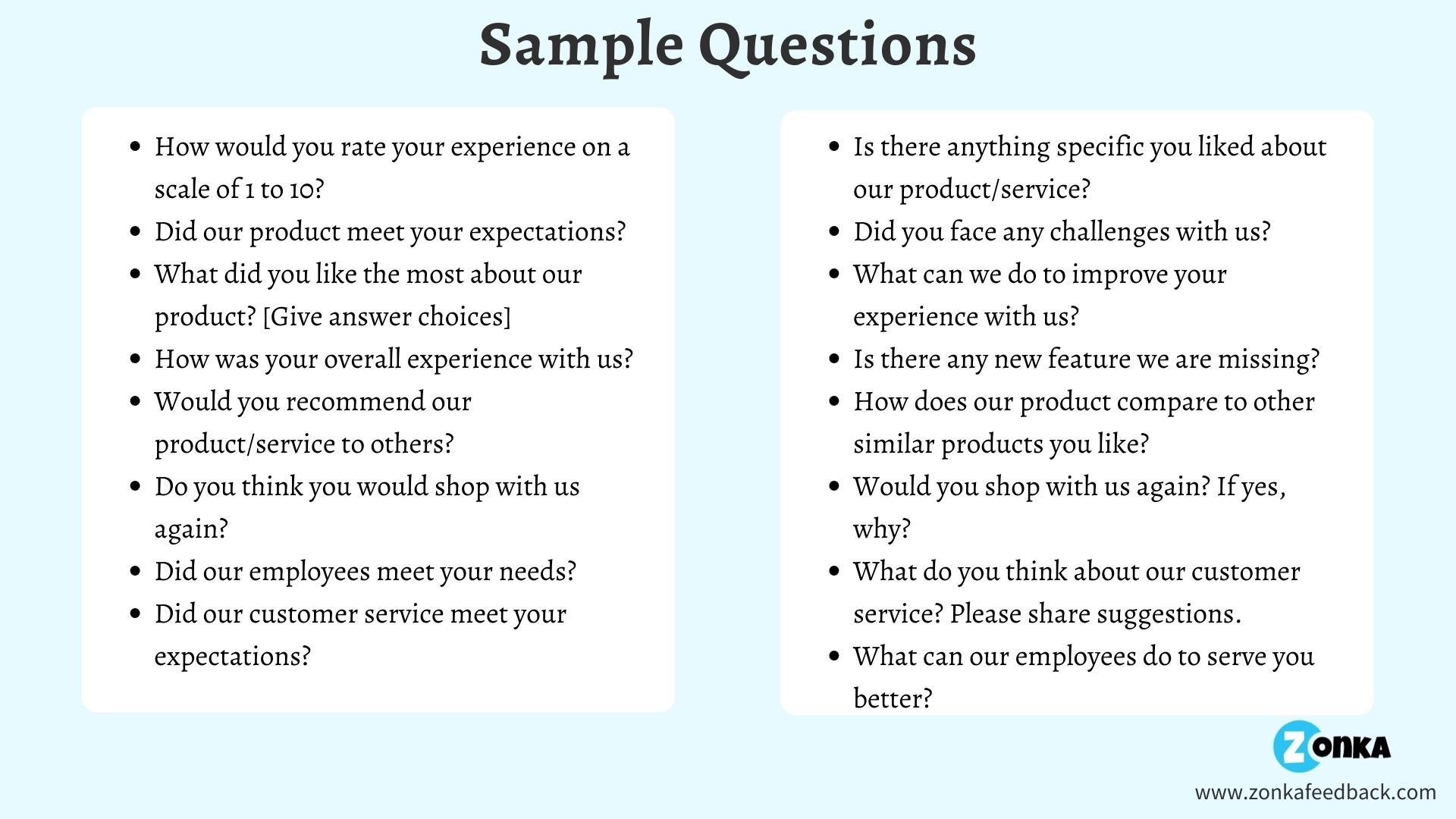
3. Personalize Surveys
For example, a food delivery brand can send its customers a survey with the question:
What do you think of your order of [food item(s)] from [restaurant name] ?Your survey tool would pass the customer data from their purchase record into these brackets, making the survey personalized for each customer. And this is what the survey question would look like this: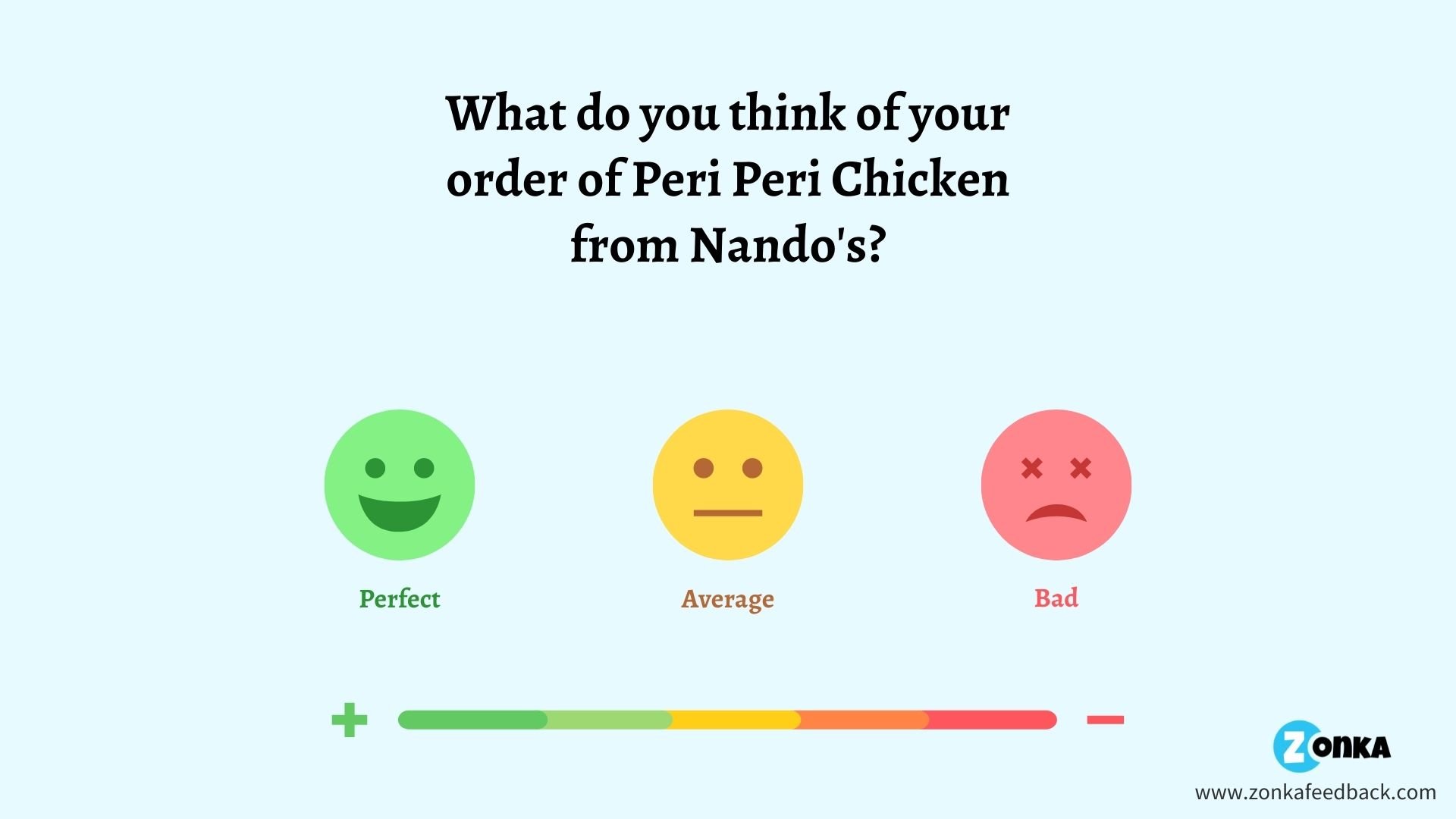
4. Add Logic to Your Survey Skip Logic
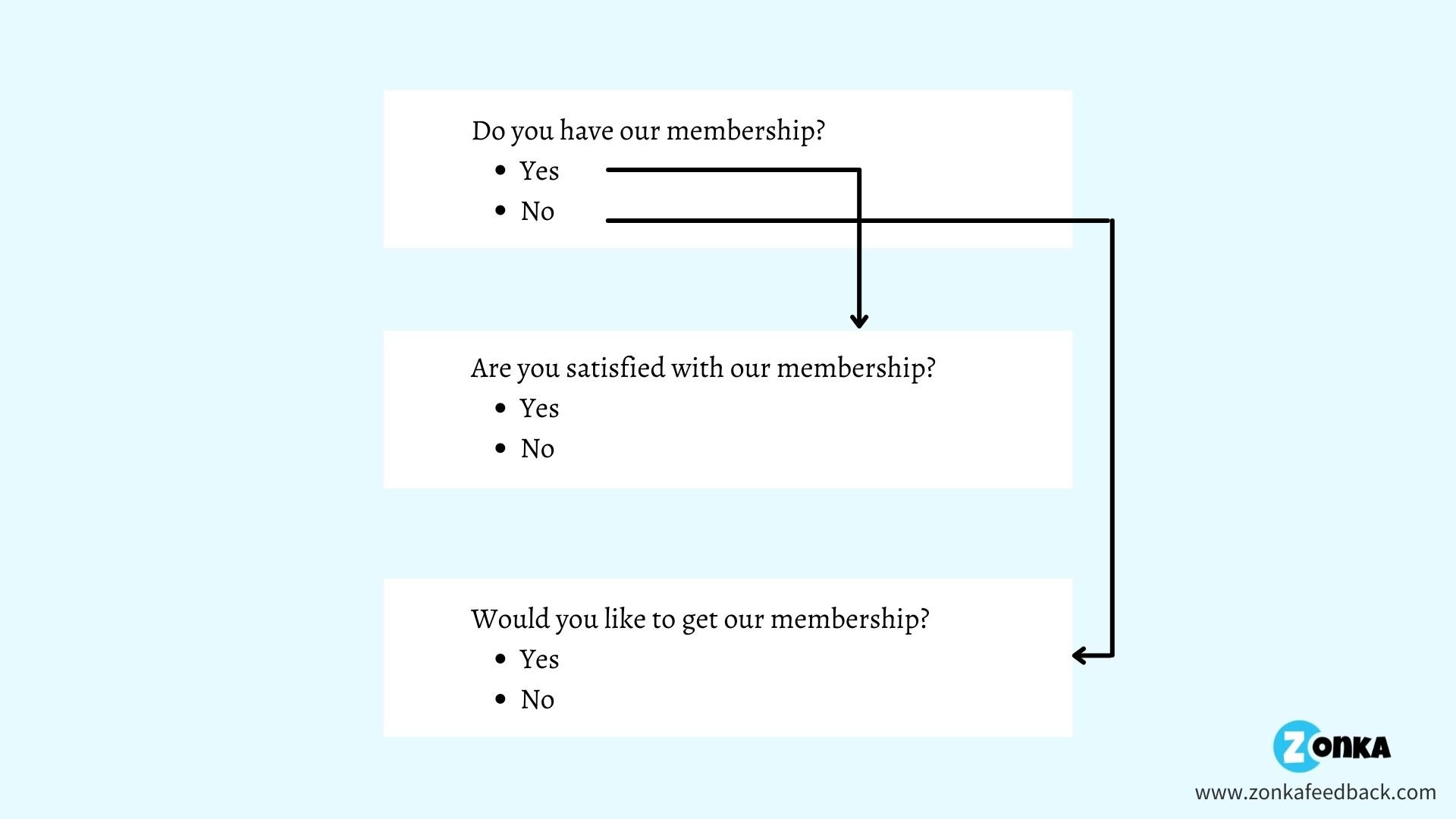
In the picture above, if the user selects 'Yes' as an answer to the first question, they would be taken to the second screen. And if they select 'No' as an answer, the second screen would be skipped, and the participant would be sent directly to the third screen. Hide or Display Logic
Redirect Logic
5. Avoid Asking Leading Questions
6. Use CX Metrics
NPS for Customer Loyalty
Scores 7 & 8 indicate Passives.
And, scores 0-6 indicate Detractors .
NPS surveys also enable you to add a second question seeking the score's reason to be able to figure out what's working and what's not working in your product or business. So basically, this is what your survey would look like: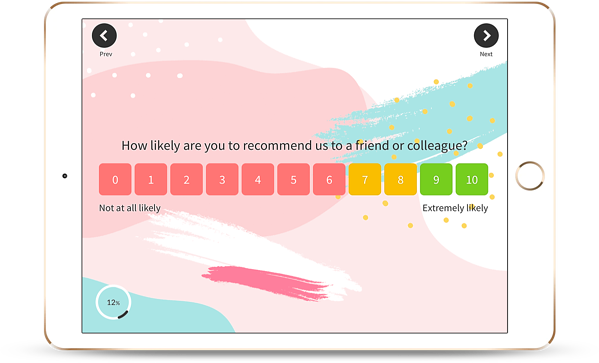
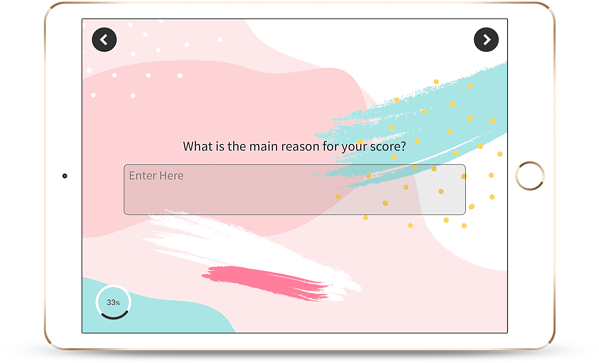
CSAT Score for Customer Satisfaction
With the help of customer satisfaction score surveys, you can ask your customers about the challenges they experienced with your brand.
The management of a Delhi-based clinic installed a kiosk station to collect patient satisfaction data through a CSAT survey. One of the most common complaints was "long waiting time before consultation". The management prioritized this complaint and made phone and online booking available for patients the same month, clearing a big roadblock between the brand and excellent customer experience.CES for Customer Perceived Effort
It must be noted that CES does not give you an understanding of customer behavior. Rather, it tells you how successful you are in servicing your customers. With CES data, you can increase your efforts in specific areas and improve customer loyalty.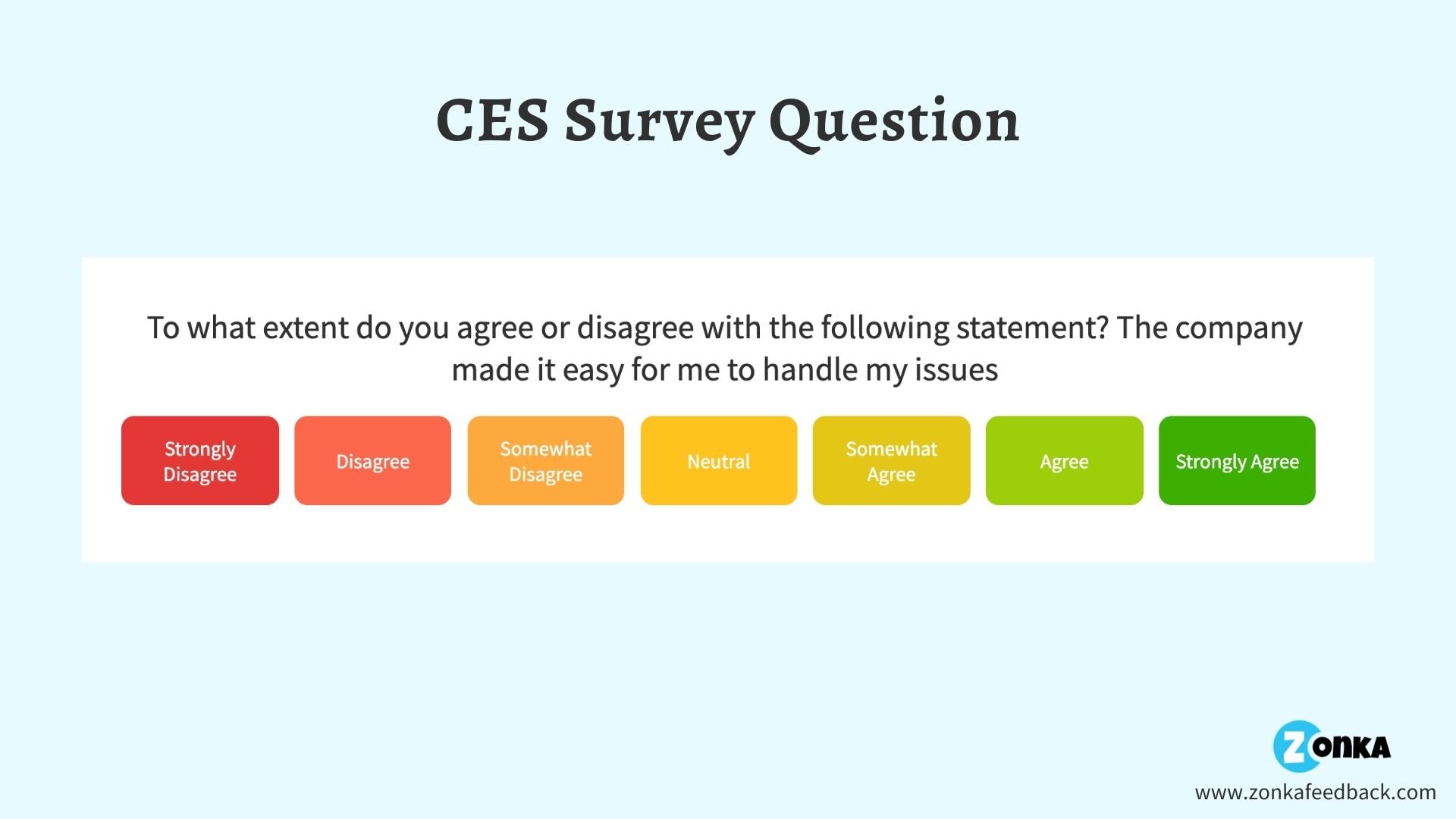
7. White-Label Your Surveys
White-Label Your Survey
White-Label Your Email Surveys
White-Label SMS Surveys
White-Label Online and Web Surveys
A suspicious or unknown survey link can lead to customers having second thoughts about taking the survey. But by white-labelling online and web surveys, you can personalize your survey domain so that it has the name of your brand in the survey URL. This is what your survey domain would look like:
8. Design Goodlooking and Appealing Surveys
Zonka Feedback VoC Surveys
Learn more about Voice of Customer
Published on Aug 27, 2021. Updated on Jul 04, 2022.
Source: https://www.zonkafeedback.com/blog/what-are-voice-of-customer-surveys
0 Response to "Easy Drawing of Survey Easy Drawing of a Resturant Servey"
Post a Comment